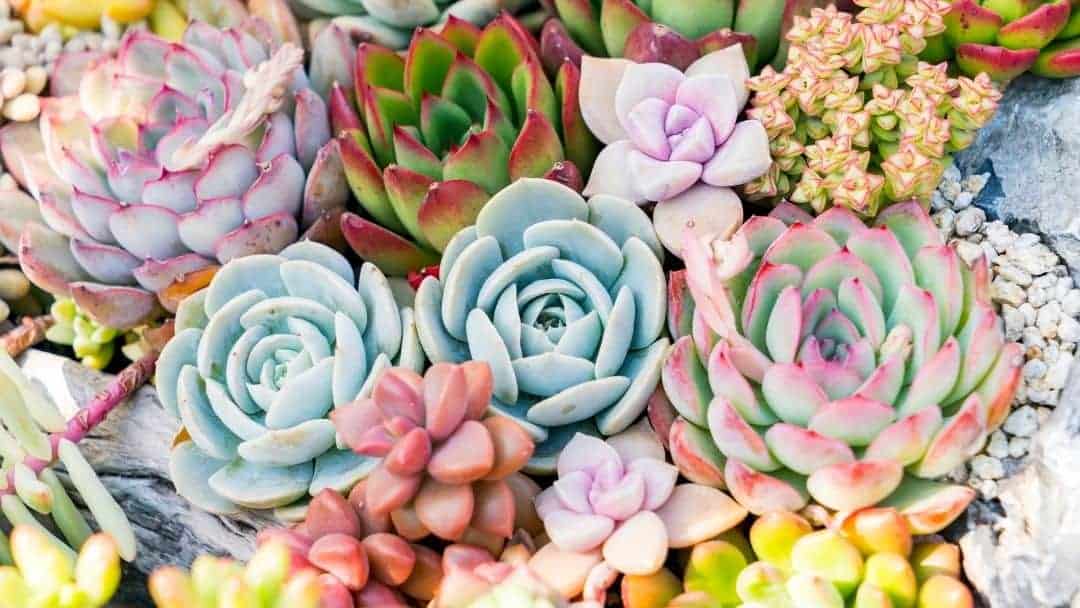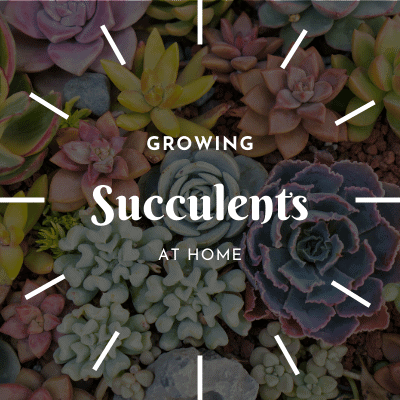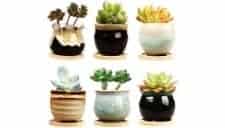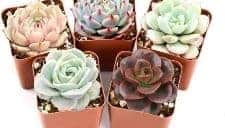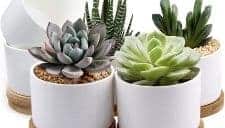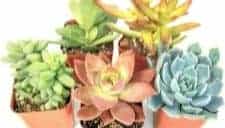How to Grow Happy Succulents on a Balcony Garden
If you live in an apartment or condominium, and find yourself lacking the space to grow a garden, succulents are perfect! They require little maintenance, can be placed outside during the summer months (with protection from bugs), and can be brought inside when the temperatures drop. Read on for our DIY tips on how to grow happy succulents in your home in 6 easy steps.
What are Succulents and Why Should I Grow Them on My Balcony?
Succulents and cacti are a group of plants typically found in dry arid environments like deserts and other locations with a lot of sand, sun exposure, or arid weather. They can survive for weeks on end without water because they store up enough in their leaves to last during drought periods.
Succulents and cacti are popular house plants because they require minimal care and some varieties grow well indoors (e.g., jade). You’ll also find succulent arrangements decorating the modern weddings you attend this summer! Below is our guide to help you get started with growing your own happy succulent garden at home.
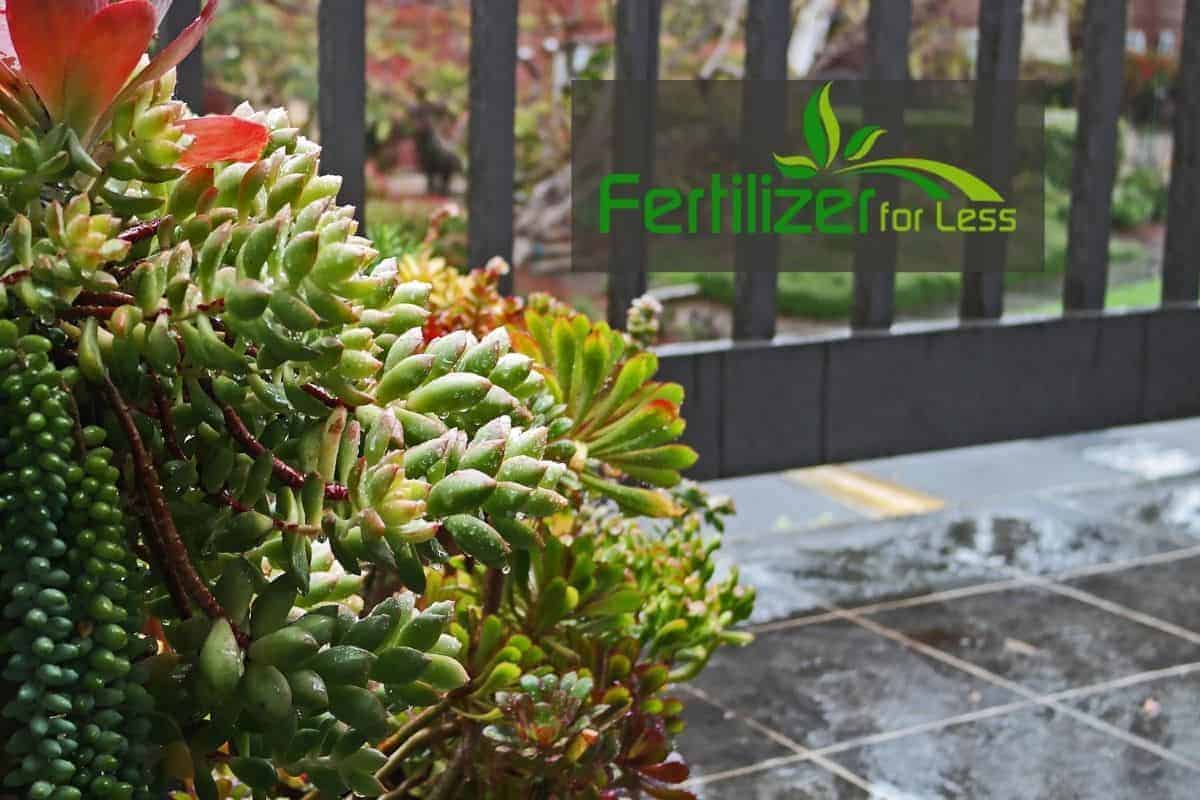
Succulents are Easy to Grow! They Require Little Maintenance
Their uncanny ability to store water makes succulents the perfect plant for beginners and busy on-the-go apartment dwellers alike. They thrive in hot and dry climates with very infrequent watering, making them perfect for partly shaded balcony area gardens. Succulents are beautiful and the come in all shapes and sizes!
1. Find a sunny and sheltered balcony
Achieve success with succulents and cacti by providing them plenty of light and the right soil, but be sure not to over-water them. Succulents need a lot of sun for healthy growth, but it needs to be an indirect lighting for most species. Place succulent containers away from direct sunlight towards the back and center of your covered balcony, so that they are shielded from the midday sun. Too much direct lighting can cause wilted leaves due to heat stress! After you select the perfect location, it’s time to pick the right containers and potting soil for your new succulents.
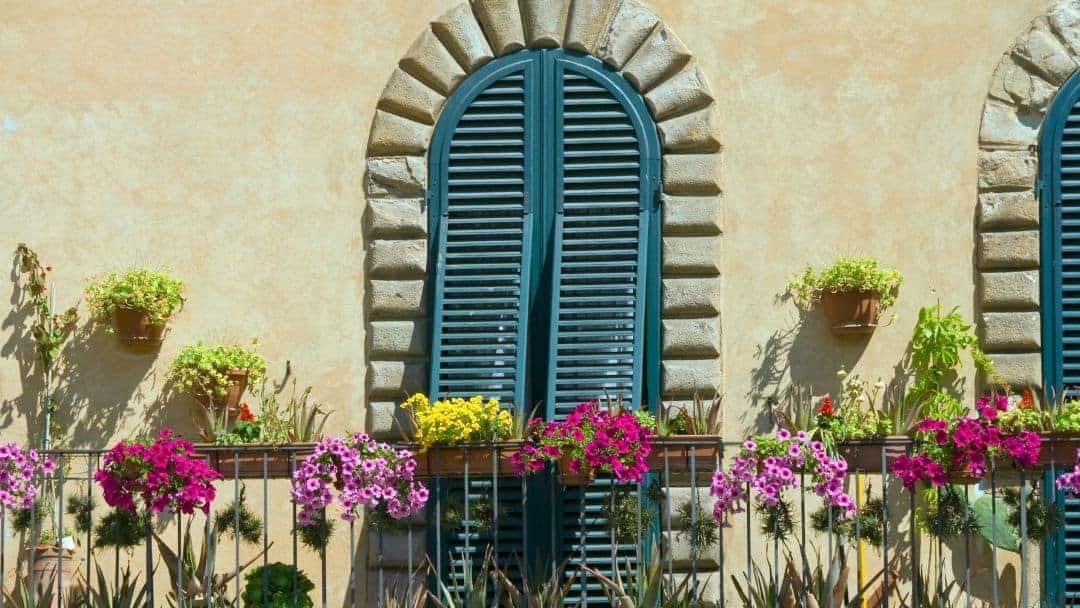
2. Plant succulents in pots with drainage holes
Succulents do best in pots that have drainage holes and are filled with a potting mix made of at least 30% sand and some perlite or vermiculite added to ensure the standard potting soil drains well enough for a succulent planter. Standard commercial potting soil mixes are often too heavy for succulents, which are not rooted deeply in the ground like other houseplants. Another option is to buy a pre-mixed soil designed specifically for succulents.
The potting mix should be light and dry enough that you can squeeze a handful of soil into a ball with some ease. Succulents require very little water during their dormant period, so it is important to provide excellent drainage to prevent root rot. To do this, you can add a drainage layer to the bottom of your pots that allows the soil to dry out a bit faster.
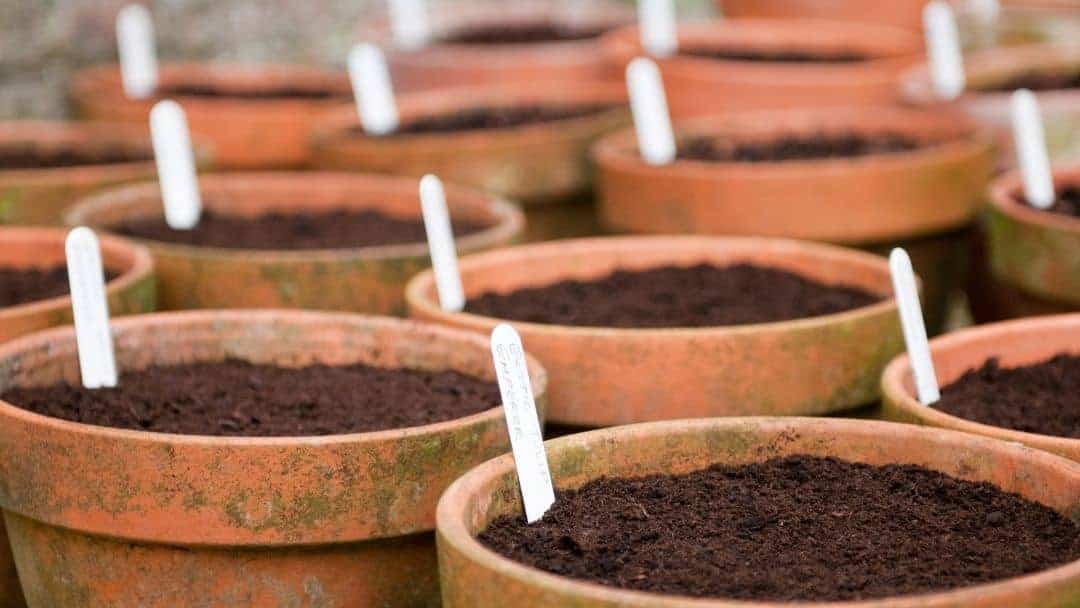
3. Add potting soil, sand, perlite or vermiculite to the base of your container
Before you add your succulent soil mix to your containers you need to place about an inch of faster draining material in the very bottom of the flower pot. This will help the soil in your pot dry out more quickly. You can use either one or a combination of materials such as:
Gravel
Perlite
Vermiculite
You can also mix in some perlite and vermiculite with your soil mix if it seems like it may be retaining too much water. Test the drain holes to make sure they are not getting obstructed and allowing water to stand in the base of the container.
We’ve reviewed the top succulent soil mixes in another post you might want to check out if you’re just getting into succulents:
Click Image to View Post
4. Place your plant in its pot on the balcony
Now that you’ve selected your location, container and potting soil mix, it’s time to place your balcony succulent outdoors.
Place succulent plants in pots where they will get a lot of sun and can be seen every day in case they need extra watering.
When you water, make sure to slowly wet the soil down about an inch or two deep- at least until it is moist but not dripping wet from the bottom of the container. This helps prevent over watering that could lead to root rot.
Place your succulent in its pot on the balcony so there’s a small space for air circulation around all sides of the container as well as between other containers if needed. When using small pots (under 12 inches), place them closer together than larger ones for better airflow and moisture control. Now just sit back and enjoy watching these little guys grow! Just be sure to be careful with how you water any succulent so you don’t give them too much.
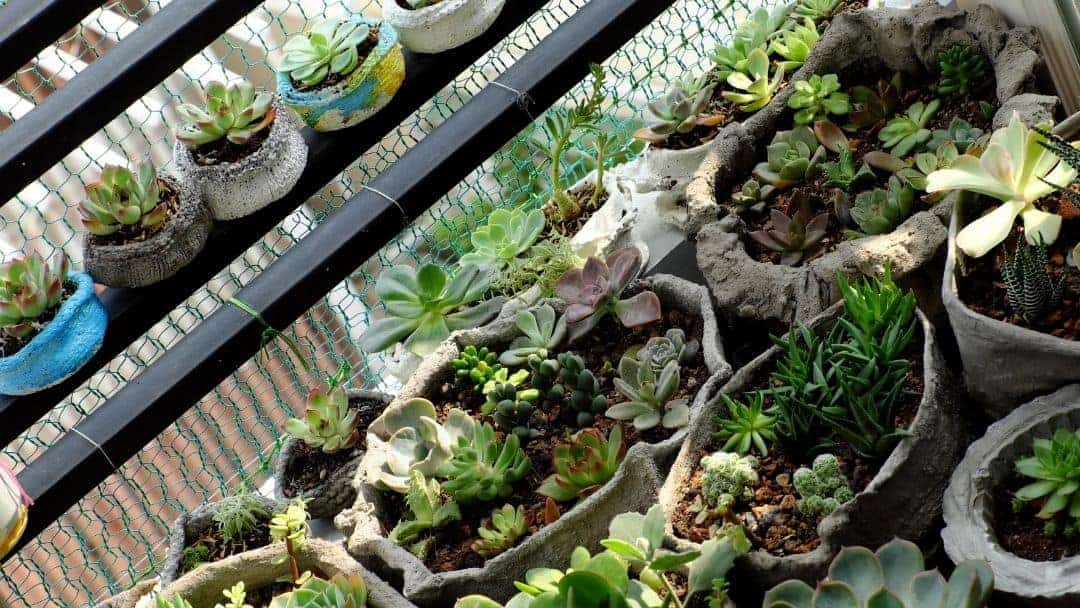
5. Water it regularly so that the soil stays moist but not wet
Never let water stand in the tray beneath your planters because it may cause rot as the plant roots sit submerged for hours at a time. If some leaves turn brown prematurely, this is often an indication that they are standing in cold wet dirt which should be dried out immediately! However, if all your succulents look good despite being watered less often than you have been, it may be another issue like either too much or not enough fertilizer.
Protect your Succulents from Chlorine
Most succulents are happy with rainwater! If that’s not an option you could also just fill up a watering can from the sink, but if you live in an area where the tap water has chlorine or other chemicals we recommend filtering it for your succulent garden. Succulents are especially sensitive to chemicals and may not grow as well under tap water.
Related Post: Why are the leaves on my succulent shriveled?
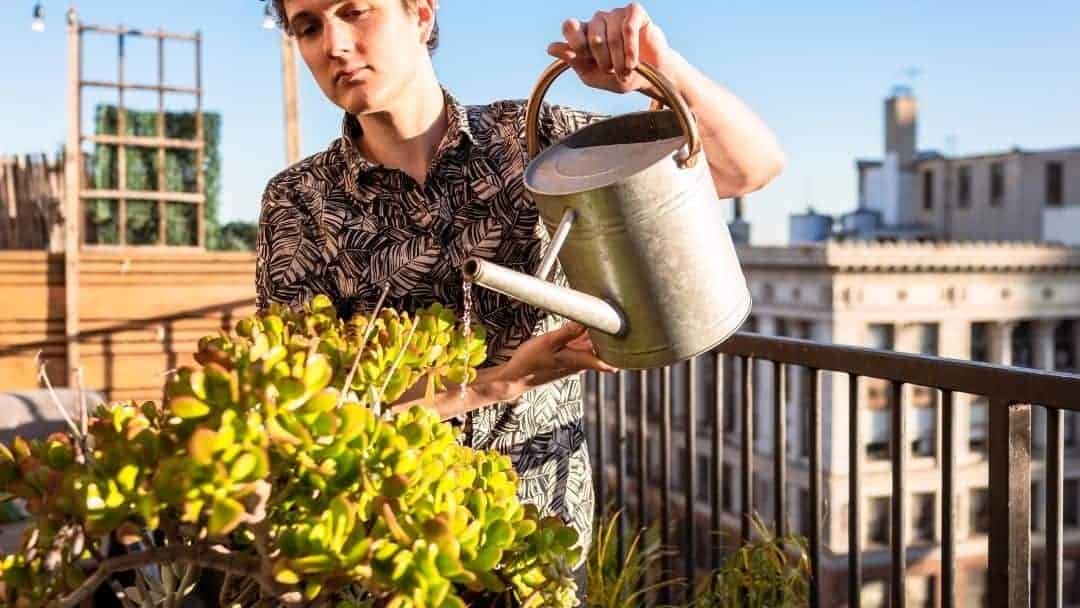
6. Fertilize once a month or less with houseplant fertilizer or diluted fish emulsion solution
Succulents don’t need a lot of fertilizer to be happy. They’re desert flowers after all! In fact, you can go as far as 1 whole year apart between feedings, but they may respond better to quarterly or even monthly applications of fertilizer. The recommended ratio of fish emulsion fertilizer to water is about a half teaspoon per gallon used for watering. You can also get one of the many available houseplant fertilizers that were designed specifically for succulents. No matter if you’re growing an indoor or outdoor succulent garden, these three options below provide everything you need for a green thumb year-round!
Our Pick – The Top Three Fertilizers for Your Balcony Succulent Garden
Now Go Order Your Succulent Plants!
If you’re looking for a fun and educational way to bring some life to your balcony, succulents are the perfect plants. They require little maintenance, can be planted in pots with drainage holes or even wedged between rocks on an outdoor wall. By following these simple steps as well as protecting them from exposure to chlorine, you’ll have healthy green friends that will brighten up any space! Did this article teach you something new? You might want to check out our other blog posts about plant care tips before heading off into the world of houseplant shopping. We’ve got lots more information about easy to grow plants so be sure to bookmark our website. Now it’s time to shop for succulent ideas for your apartment balcony – just look at all those bright and colorful leaves on the succulent plants below:

